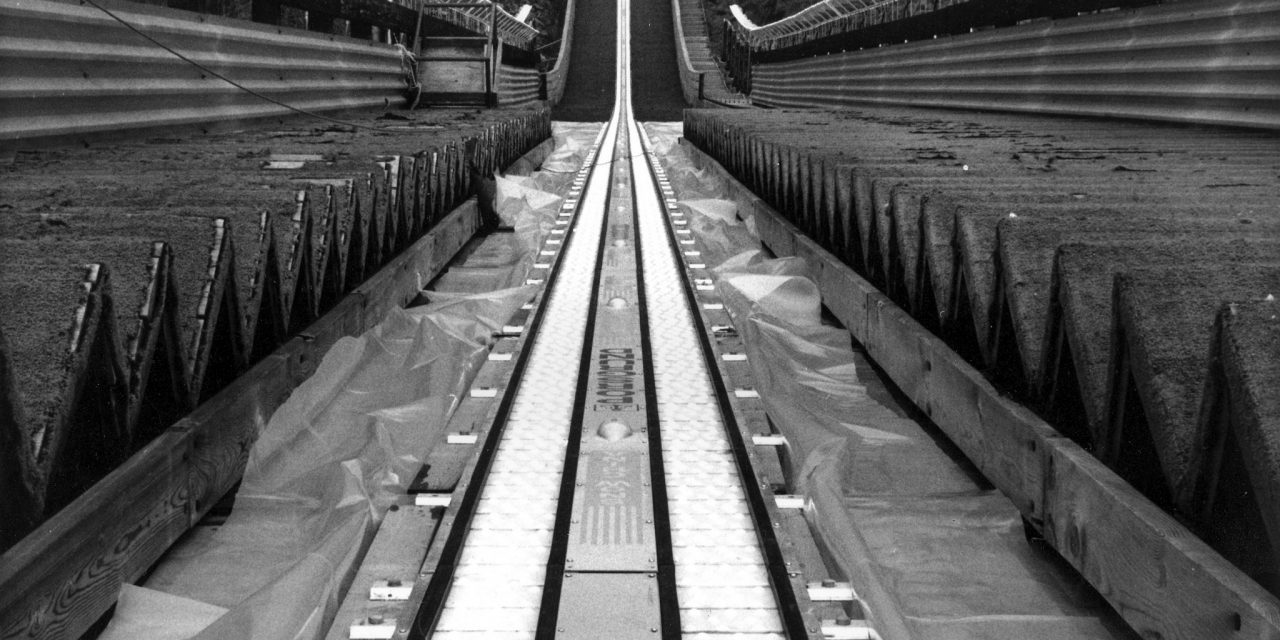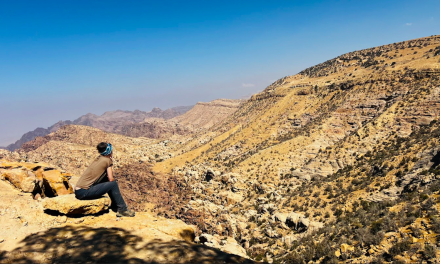Will Ford Finally Unload Big Thunder?
By Darren McChristie
I see it almost every day on my commute to work. My hands, normally relaxed on the wheel, clench for that stretch of Highway 61 along the Nor’Wester Mountains just outside Thunder Bay. I try hard not to look at it, but the large analogue scoreboard, with its fluorescent pixels still flipped on, remains clearly visible. To the right, protruding among towering pines and old-growth maple trees, the metal tower supporting the in-run of the K120m ski jump juts into the skyline. It is a study of nature at work, on display for all to see, slowly overtaking what was once our pride and joy—the magnificent Big Thunder Sports Park.
My personal connection to Big Thunder began in London, Ontario in 1987. I was in my second-last year of high school when my father announced that we were moving to Thunder Bay. I knew nothing about what lay beyond Timmins and Sault Ste. Marie, so Thunder Bay meant little to me. But I did know about the ski jumps. In its day, Big Thunder hosted 39 World Cups and 50 National Championships, and I had seen many of the highlights on TV. When friends asked me why I was moving to such a remote location, I jokingly replied “my mom got a job shovelling snow off the ski jump at Big Thunder.” It was all I knew about this city—the legendary ski jumps, Horst Bulau and, of course, Steve Collins.
Less than a year later, I found myself shovelling snow off the ski jumps, having been fortunate enough to land a job shortly after relocating. It was an experience that provided all the skills to be a true nothernerner: brush cutting, operating four-wheelers and skidoos, and identifying tree species. I did it all at Big Thunder. Over time, I made my way from a general labourer to the assistant operations manager, but most importantly, the experience shaped my personality, fostered my love of the outdoors, and left me with an everlasting sense of connection to Big Thunder. It is this first-hand experience of everything that Big Thunder was and could have been that causes me great frustration on my daily commute—the lack of progress at a facility frozen in time for 22 years. It boggles my mind.
At its height, Big Thunder filled hotel rooms with visitors from all over the world and injected millions of dollars into the local economy. Over the decade of my employment, there were countless building projects, most of them in preparation for the 1995 World Nordic Ski Championship—the pace and fury of development was perhaps its own demise.
Just prior to its closure, a deep swimming pool—measuring a whopping 75 x 100 feet—was built with the hopes of attracting the national freestyle team to train in Thunder Bay. At the time it was Canada’s only freestyle aerial pool. Lakehead University built a state-of-the-art biomechanics lab on site, complete with high-tech piezoelectric floor to measure force. Two ski jumps were covered in plastic with porcelain in-runs for training in the summer. Helicopters were used to install light towers for night jumping. An intricate network of trails was designed by a world-renowned expert and cut through stands of rare old-growth pines, yellow birch, and sugar maples, bringing the total length of trails to 60 km. But perhaps the most impressive of all, a two-storey cross-country skiing chalet with large south-facing windows overlooking a bowl-shaped stadium, was built at the base of the mountains—perfect for viewing international cross-country skiing events with the potential for hosting outdoor concerts and weddings.
As great as Big Thunder was, it never had a chance to reach its full potential. It was often mired in controversy as a publicly funded facility competing with private businesses. Months after hosting its largest event, it was deemed a cash cow under Mike Harris’ “Common Sense Revolution.” The gates were locked on June 30, 1996.
No one is more dedicated to the cause of reopening Big Thunder for public use as Paul DeGiacomo, co-chair of the Friends of Big Thunder (FOBT). For over a decade they have been working with other stakeholders, like the city, Fort William First Nation, Neebing Township, and Lakehead University in an effort to develop an acceptable business plan based on facts and figures. DeGiacomo is driven by the idea that opening it is simply “the right thing to do, for the site, and for the people of Thunder Bay.” He is the unofficial champion for Big Thunder, fielding calls and questions on an almost a weekly basis. When the energy drink giant Red Bull contacted him to express interest in holding a large snowmobile event at Big Thunder, DeGiacomo brought it to the attention of the MPP of the day—Bill Mauro—who could not offer a commitment. Despite having done everything right, DeGiacomo and the FOBT continue to be frustrated by the government’s inaction.
Media reports about Big Thunder have a common thread—dead ends and a lack of transparency and accountability. The government has denied or turned down expressions of interests, feasibility studies, and business proposals for not meeting the government’s (unknown) criteria. Undaunted, DeGiacomo and the FOBT have persevered—hopeful the new government will hear out their latest plan that’s in the works.
Surprisingly, Big Thunder is not for sale. It never was, according to Infrastructure Ontario, who manages the property on behalf of the government. Their official position on its current status is that the Ministry of Government and Consumer Services is working with them “to identify opportunities for the sale of surplus properties across the government’s realty portfolio.” It’s been the message previous governments have used for 22 years.
With Ford’s “Government for the People” and ruthless spending cuts on tap, it’s only a matter of time before they examine the books and discover the Ontario taxpayer continues to foot the bill for the property. A business study prepared by Lakehead University and the FOBT cites six figures a year to heat, maintain, and provide security to the facility—after two decades, it’s likely into the millions.
Although most of its moveable assets were mysteriously transferred to the Ministry of Natural Resources and Forestry in 2015 (and then sold), and the big jumps no longer conform to FIS standards, Big Thunder retains huge potential, perhaps now more than ever. The legacy of the 1995 World Nordic Ski Championships lives on thanks to the tireless work of Paul DeGiacomo and FOBT. The time has come for the government to do the right thing and put a for sale sign on Big Thunder. After 22 years, Thunder Bay and the taxpayers of Ontario deserve action and transparency, and I would like to commute to work in peace.















